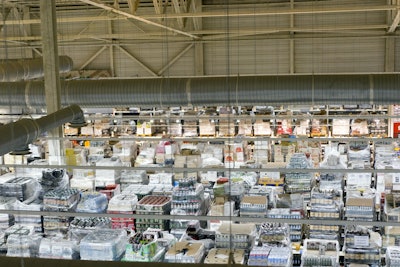
The pandemic fundamentally changed supply chains. According to the Harvard Business Review, “The supply shock that started in China in February and the demand shock that followed as the global economy shut down exposed vulnerabilities in the production strategies and supply chains of firms just about everywhere.” Companies that have so far survived the pandemic through the summer of 2021 need resiliency in their supply chains if they hope to remain competitive. Logistics, inventory and senior managers should understand their supply chain vulnerabilities and the ways the pandemic added pressure due to first demand and then supply restraints.
Nine months of demand uncertainty
Demand disruptions and uncertainty occurred during the first six months of the pandemic. Stores were shuttered, people focused spending on personal protective equipment (PPE) and home goods like toilet paper. The pandemic shifted what and where consumers shopped. For many categories, upwards of 70% of demand vanished overnight. According to a survey from Jabil, 78% of supply chains were disrupted by the pandemic. These disruptions hit some sectors like clothing especially hard. For example, if executives running a retail clothing store saw plummeting demand and if they shut down due to the Coronavirus disease (COVID-19), then they’re also shutting down every upcoming order. This caused backlogs to vanish and employees to receive furloughs because they aren’t working in the store, and there’s no shipments to manage or stock to handle.
During this period, projecting revenue and forecasting demand was exceedingly difficult. The models that worked in 2018 or 2019 were invalid in 2020 with different packaging, new SKUs and different forecasts based on shifting consumer desires.
Unstable supply issues deeper into the pandemic – the following nine months
After the demand disruptions that impacted first half of the pandemic, industries confronted supply issues. Logistics costs rose as stores re-opened and no longer needed to hold goods or deny re-orders. The supplies manufacturers used in June, July and August of 2020 were procured before the pandemic hit logistics, and when demand rebounded, there were raw materials shortages. Finished goods were not completed on time due to these shortages and supply constraints. So, if a company was short packaging materials “A,” then they’d transition to the “B” or “C” options. It’s what businesses had to do to remain operational, by protecting revenue, managing costs and using available inventory.
Operations during this period meant trying to match demand with supply. The objective for companies is threefold -- to maximize revenue and margins and ensure there’s an optimal investment in inventory. In the first nine months of the pandemic, maximizing these objectives was demand constrained. In the following nine months, supply was the issue due to raw materials shortages and delays. In this environment, a business must project revenue, protect margins and manage inventory. This leads to shortages and significant disruptions, like the ongoing semiconductor shortage impacting dozens of verticals.
Supply shortages are a significant cost, whether a company is selling semiconductors or socks. The chip industry is more mature, with firms establishing decades-long contracts. While in the fashion and consumer packaged goods (CPG) industries, there’s less mature suppliers, so companies move around in their search for a supplier that can deliver during uncertain times. Both situations cost money, and firms in these verticals need outside technology tools to help them better manage forecasting.
Armed with better real-time information, firms can optimize inventory during periods of constrained supply and route shipments to their top-tier partners while accepting delays for lower priority partners.
While the pandemic’s profound effects were not predictable, it did underscore the need for digital capabilities. Firms with digital platforms informing their inventory and supply chain held a distinct growth advantage compared to those less digitally savvy. According to Accenture, the “leaders” in digital solution adoption pull in five times as much revenue as “laggards.” Future disruptions (hopefully not on a pandemic scale) will further test companies to learn the lessons from the demand and supply constraints and lessons from 2020 and 2021.




![Pros To Know 2026 [color]](https://img.sdcexec.com/mindful/acbm/workspaces/default/uploads/2025/08/prostoknow-2026-color.mduFvhpgMk.png?auto=format%2Ccompress&bg=fff&fill-color=fff&fit=fill&h=100&q=70&w=100)







![Pros To Know 2026 [color]](https://img.sdcexec.com/mindful/acbm/workspaces/default/uploads/2025/08/prostoknow-2026-color.mduFvhpgMk.png?ar=16%3A9&auto=format%2Ccompress&bg=fff&fill-color=fff&fit=fill&h=135&q=70&w=240)





